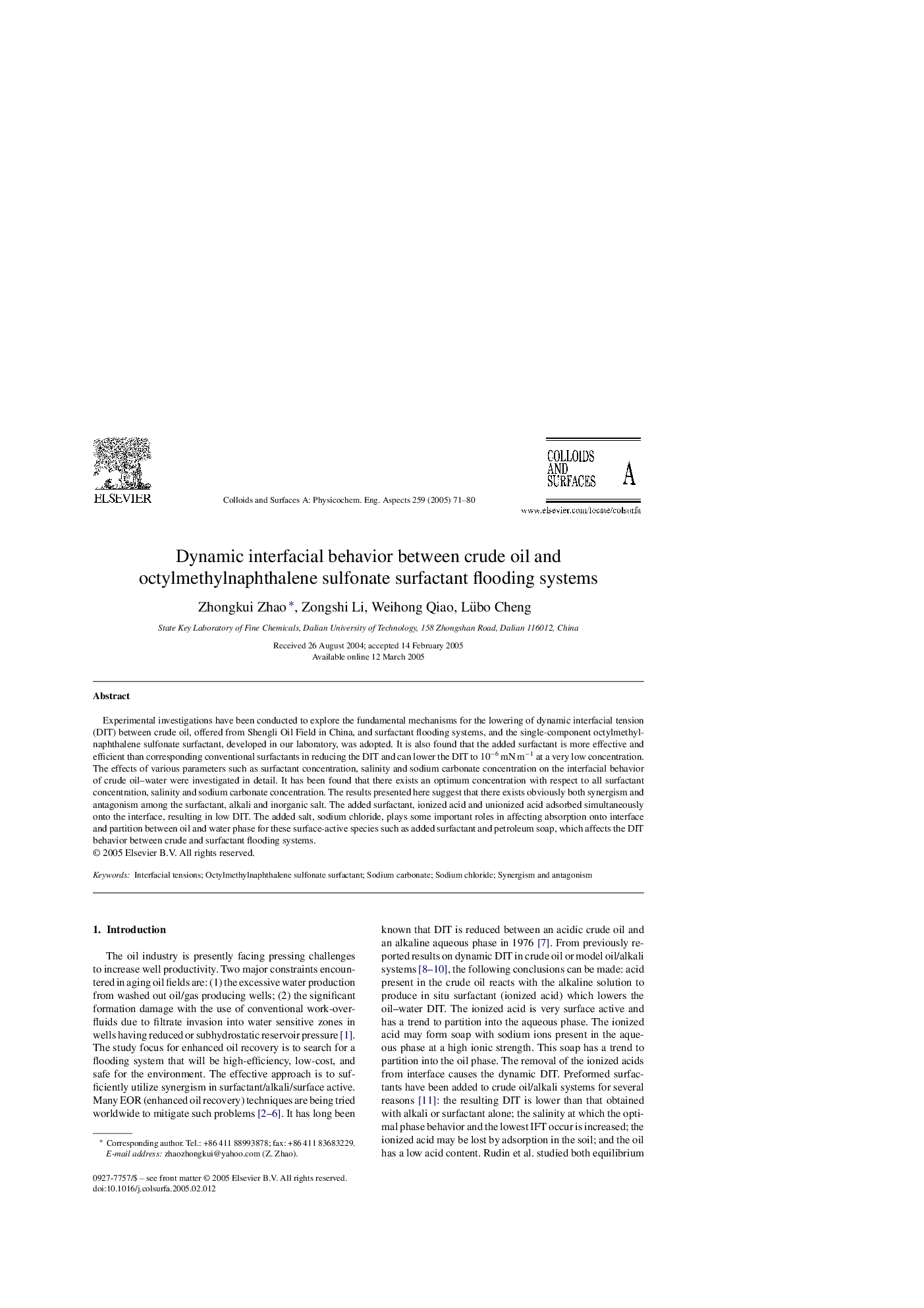| Article ID | Journal | Published Year | Pages | File Type |
|---|---|---|---|---|
| 9675908 | Colloids and Surfaces A: Physicochemical and Engineering Aspects | 2005 | 10 Pages |
Abstract
Experimental investigations have been conducted to explore the fundamental mechanisms for the lowering of dynamic interfacial tension (DIT) between crude oil, offered from Shengli Oil Field in China, and surfactant flooding systems, and the single-component octylmethylnaphthalene sulfonate surfactant, developed in our laboratory, was adopted. It is also found that the added surfactant is more effective and efficient than corresponding conventional surfactants in reducing the DIT and can lower the DIT to 10â6Â mNÂ mâ1 at a very low concentration. The effects of various parameters such as surfactant concentration, salinity and sodium carbonate concentration on the interfacial behavior of crude oil-water were investigated in detail. It has been found that there exists an optimum concentration with respect to all surfactant concentration, salinity and sodium carbonate concentration. The results presented here suggest that there exists obviously both synergism and antagonism among the surfactant, alkali and inorganic salt. The added surfactant, ionized acid and unionized acid adsorbed simultaneously onto the interface, resulting in low DIT. The added salt, sodium chloride, plays some important roles in affecting absorption onto interface and partition between oil and water phase for these surface-active species such as added surfactant and petroleum soap, which affects the DIT behavior between crude and surfactant flooding systems.
Related Topics
Physical Sciences and Engineering
Chemical Engineering
Colloid and Surface Chemistry
Authors
Zhongkui Zhao, Zongshi Li, Weihong Qiao, Lübo Cheng,
